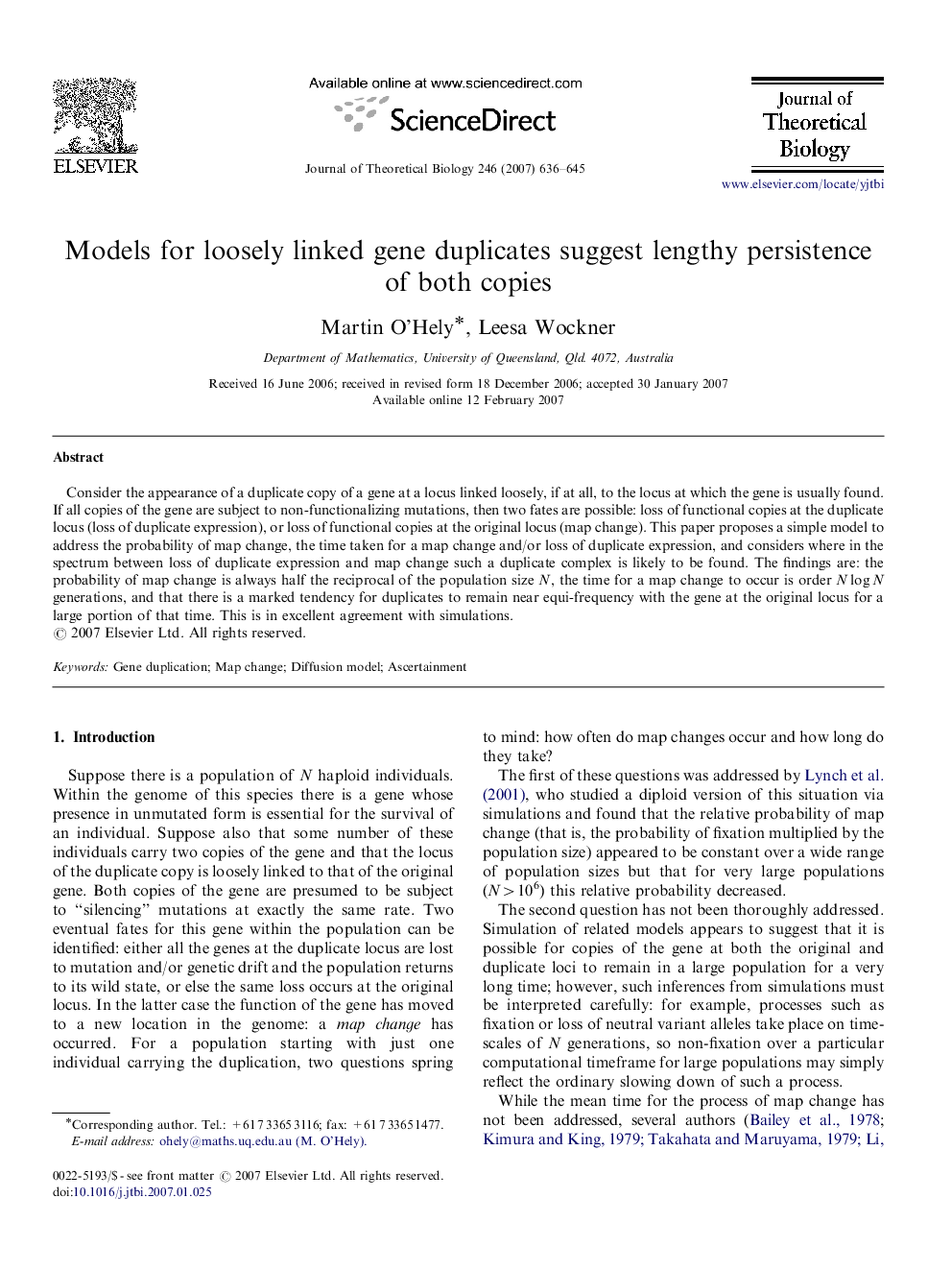| Article ID | Journal | Published Year | Pages | File Type |
|---|---|---|---|---|
| 4498936 | Journal of Theoretical Biology | 2007 | 10 Pages |
Abstract
Consider the appearance of a duplicate copy of a gene at a locus linked loosely, if at all, to the locus at which the gene is usually found. If all copies of the gene are subject to non-functionalizing mutations, then two fates are possible: loss of functional copies at the duplicate locus (loss of duplicate expression), or loss of functional copies at the original locus (map change). This paper proposes a simple model to address the probability of map change, the time taken for a map change and/or loss of duplicate expression, and considers where in the spectrum between loss of duplicate expression and map change such a duplicate complex is likely to be found. The findings are: the probability of map change is always half the reciprocal of the population size N, the time for a map change to occur is order NlogN generations, and that there is a marked tendency for duplicates to remain near equi-frequency with the gene at the original locus for a large portion of that time. This is in excellent agreement with simulations.
Related Topics
Life Sciences
Agricultural and Biological Sciences
Agricultural and Biological Sciences (General)
Authors
Martin O'Hely, Leesa Wockner,
